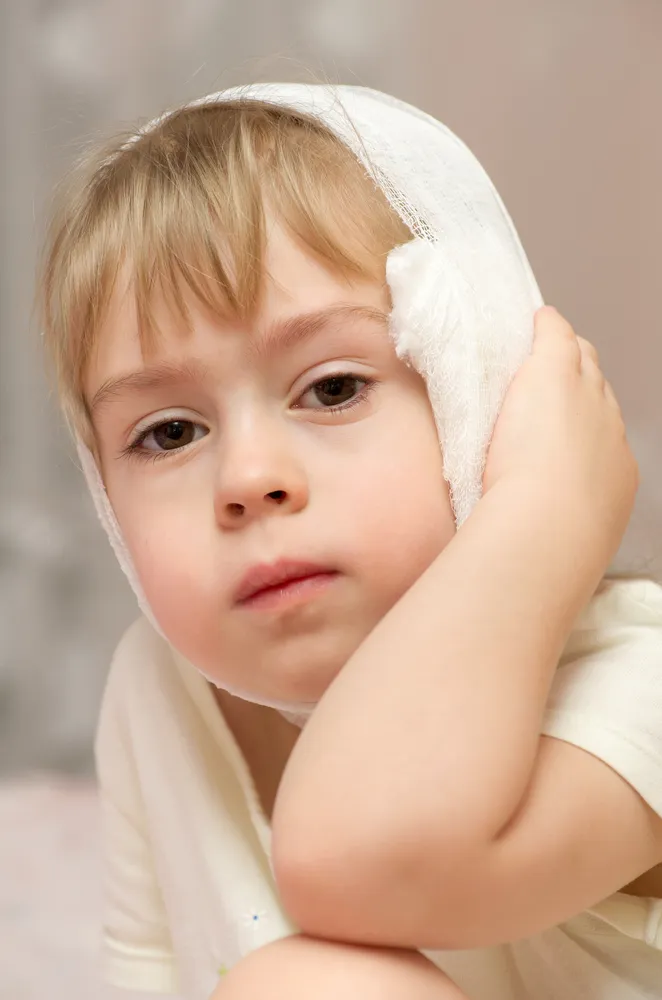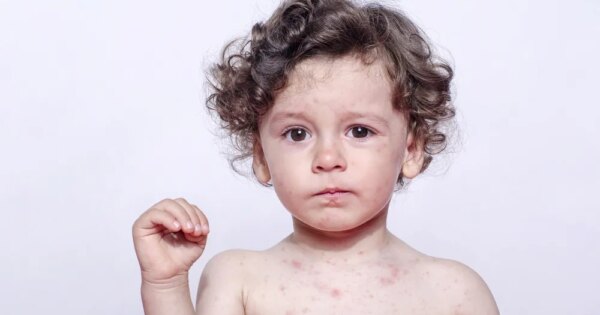As parents, we’ve all experienced the sleepless nights, non-stop crying, and emergency trips to the pharmacy and doctor because our child is suffering with a painful ear infection.
Approximately 70-percent of all children are stricken with at least one ear infection by age 3—most typically following a cold, a bout of allergies, or a sinus infection, which can cause the Eustachian tube to become inflamed and fluid to accumulate in the middle ear canal (an ear infection referred to as otitis media with effusion) or a mixture of fluid and bacterial infection to accumulate in the mid-ear cavity (referred to as acute otitis media ear infection). The pressure on the ear drum is the cause of extreme pain and associated symptoms of fever, ear tugging, temporary hearing difficulties, yellow or white ear discharge, loss of sleep and appetite, irritability, and crying.
As parents it’s so difficult to see our children in pain. However, you can provide a bit of relief using these eight tips…
10. Use a Warm Compress
Apply a soft, warm towel to your child’s affected ear. The towel can be moistened with warm water (make sure it’s not too hot).
9. Elevate the Head
Keeping your child’s head slightly elevated with a soft pillow or blanket can ease some of the pressure during nap and bedtime. This is only suitable for children over the age of 2-years old. For babies, place them snuggly to nap in a car seat to keep head elevated safely.
8. Use Children’s Pain Relief
While aspirin should never be given to children under 19-years-old (i.e., it can cause Reye’s syndrome and damage the brain and liver), children’s specific acetaminophen or ibuprofen can be used in moderation to safely ease middle ear ache pain and pressure. Keep in mind that acetaminophen and ibuprofen are not recommended for babies under 6-months of age.
7. Drink Plenty of Fluids
The act of drinking and swallowing will often open the eustachian tube, allowing fluid accumulation to drain from the middle ear, and providing some relief from a middle ear infection.
6. Chewing Gum
Older children can be given a piece of sugarless gum to chew while supervised. Again, the act of chewing and moving the jaw muscles will often open swollen eustachian tubes enough for some fluid and infection to escape from the middle ear.
5. Refrain from Prone Bottle Feeding
Bottle fed babies are more likely to suffer more pain with ear infections if they feed and fall asleep lying down. This prone position can cause milk to drain through the eustachian tube and into the middle ear, where it places further pressure on the eardrum or worsens the bacterial infection. If your child has an ear infection, or is prone to frequent ear infections, bottle-feed them while holding them upright.
4. Ear Drops
If your child is suffering an ear infection with no visible discharge, eardrops may help soothe the pain and pressure. Apply a few drops of olive oil gently into the affected ear using a clean dropper and wipe away any excess using a clean cotton swab.
3. Remove Pacifier
While the act of chewing can sometimes free up pressure in the middle ear; the act of sucking on a pacifier can cause fluid accumulation (via the nose and throat) into the mid-ear. If the pacifier contains bacteria that may also travel with fluids to the mid-ear and cause a severe infection.
2. Avoid Secondhand Smoke
Children should never be exposed to secondhand smoke. If you smoke around your child the risk for frequent and more severe ear infections doubles. Studies from Canada’s University of Calgary, in Alberta, found that children (age 3 or younger) with parents who smoke are twice as likely to develop a middle-ear infection contrasted with children from non-smoking homes.
1. Consult a Doctor
Oftentimes, pediatricians won’t prescribe antibiotics unless an ear infection is deemed severe. Experts report that 85-precent of ear infections will clear up on their own. If excessive antibiotics are prescribed, strains of bacteria can become drug-resistant and cause further infection, which will become much harder to fight off in the future.




